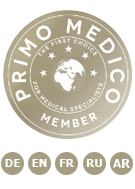Proton therapy is the best form of radiation therapy for babies, infants and young people. This is why radiation oncologists refer to this form of treatment as the “therapy of choice”. The main advantage of proton therapy is of particular benefit to children: the tumour cells are destroyed with great precision, without significantly harming the healthy tissue around the tumour.
We use the spot scanning technology developed at PSI, during which a pencil-thin proton beam targets the tumour – and only the tumour - spot by spot with the greatest possible precision, avoiding any unnecessary damage to the child or young person’s body.
This is of central importance because the body is particularly sensitive to ionising radiation during growth phases, which means that children benefit even more than adults from proton therapy with the spot-scanning technique.
Traditional radiation therapies with X-rays can have undesired long-term effects as a result of the so-called lowdose bath that develops around the irradiated area. This poses a greater problem for children than adults. When children become adults, their body grows on the basis of multiple cell divisions. Cells previously damaged by radiation therapy, because they were located in the low-dose bath near the tumour, can propagate the sustained damage to more cells every time they divide. Years, or even decades later, these damaged cells can develop into a so-called secondary tumour.
Other longer term side-effects of traditional radiation treatment on children include growth or developmental deficiencies, learning difficulties, as well as heart and circulatory disorders. The proton therapy carried out at PSI can minimise the risk of these later complications.
